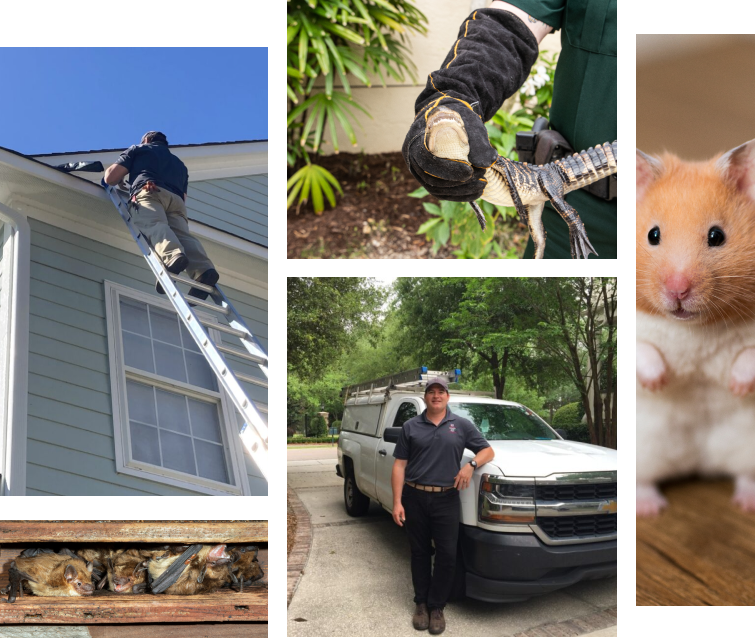The Ultimate Guide to Bat Removal: Safely and Effectively Get Rid of Bats
Bats play a crucial role in our ecosystem, helping to pollinate plants and control flying pests. However, when they take up residence in our living space, it can lead to structural damage and health risks. This comprehensive guide will help you understand the bat removal process, costs, and other considerations.

Table of Contents
- Recognizing a Bat Infestation
- Hazards of Bat Infestations
- Understanding Bat Species
- How to Get Rid of Bats ASAP
- The Bat Exclusion Process
- Bat Removal Costs
- Homeowners Insurance and Bat Removal
- DIY Bat Removal
- Professional Bat Control
- Bat Proofing and Prevention
1. Recognizing a Bat Infestation
A bat infestation may not be immediately apparent, but there are some telltale signs to watch for. These include:
- Bats flying around your property, especially near potential entry points
- Bat droppings (guano) accumulating around your home
- Foul odors from bat urine or droppings
- Noises such as scratching or squeaking coming from walls, ceilings, or attics
If you notice any of these indicators, it’s time to investigate and address the problem.
2. Hazards of Bat Infestations
While most bats are not dangerous to humans, they can carry diseases and parasites. Bat droppings, urine, and guano can harbor harmful pathogens, including the fungus that causes histoplasmosis. Additionally, bats can carry rabies, making a sick bat a potential hazard.
3. Understanding Bat Species
There are six species of bats commonly found in the United States, including big brown bats and little brown bats. Some species, like the Indiana bat, are federally protected under the Endangered Species Act. Knowing the type of bats in your home is important because it may influence the bat removal process.
4. How to Get Rid of Bats ASAP
To get rid of bats as quickly as possible, follow these steps:
- Identify the primary exits and entry points of the bats.
- Seal all entry points except the primary exits.
- Install one-way doors or exclusion devices on the primary exits.
- Monitor the situation to ensure all the bats have left.
- Seal the remaining entry points to prevent re-entry.
Keep in mind that if you’re dealing with a large colony or a protected species, you may need to contact a professional pest control company for assistance.

5. The Bat Exclusion Process
Bat exclusion is the most effective and humane method of bat removal. It involves sealing off potential entry points and installing one-way doors or exclusion devices that allow the bats to exit but not re-enter. This process should be done during the winter months or late spring, avoiding maternity season when female bats may have young that cannot fly.
6. Bat Removal Costs
Bat removal costs can vary depending on several factors, such as the size of the infestation, location, and the complexity of the exclusion process. On average, homeowners can expect to pay between $300 and $1,500 for professional bat removal services. Removing bats from eaves typically falls within this price range, but may vary depending on the complexity of the structure and the extent of the infestation.
7. Homeowners Insurance and Bat Removal
Homeowners insurance policies often exclude coverage for damage caused by bats or other pests. However, some policies may cover the costs of bat removal if the infestation has led to structural damage or poses a health risk. It’s essential to review your specific policy and consult with your insurance provider to determine if bat removal costs are covered.
8. DIY Bat Removal
While it’s possible to perform bat removal yourself, it’s not recommended for inexperienced homeowners. Handling bats without proper protective gear can expose you to diseases, and improper exclusion techniques may lead to trapped bats or further infestations. If you choose to attempt DIY bat removal, be sure to:
- Wear protective gear, including gloves and a respirator mask
- Thoroughly research and follow proper bat exclusion techniques
- Monitor the situation closely to ensure all bats have safely left the premises

9. Professional Bat Control
Hiring a professional pest control company or critter control specialist is the safest and most effective way to remove bats from your home. These professionals have the experience, knowledge, and tools necessary to safely remove bats and prevent future infestations. When selecting a company, be sure to:
- Choose a licensed and insured provider with experience in bat removal
- Ask for references and read online reviews
- Request a detailed quote and ensure it includes all necessary services, such as inspection, exclusion, and cleanup
10. Bat Proofing and Prevention
Once the bats have been removed, it’s crucial to take steps to prevent future infestations. Bat proofing and prevention measures include:
- Sealing all potential entry points, such as cracks, gaps, and holes in your home’s exterior
- Installing bat houses near your property to provide alternative roosting sites
- Regularly inspecting your home for signs of bat activity or new entry points
By following these guidelines, you can safely and effectively address a bat infestation and protect your home from future bat-related issues.
